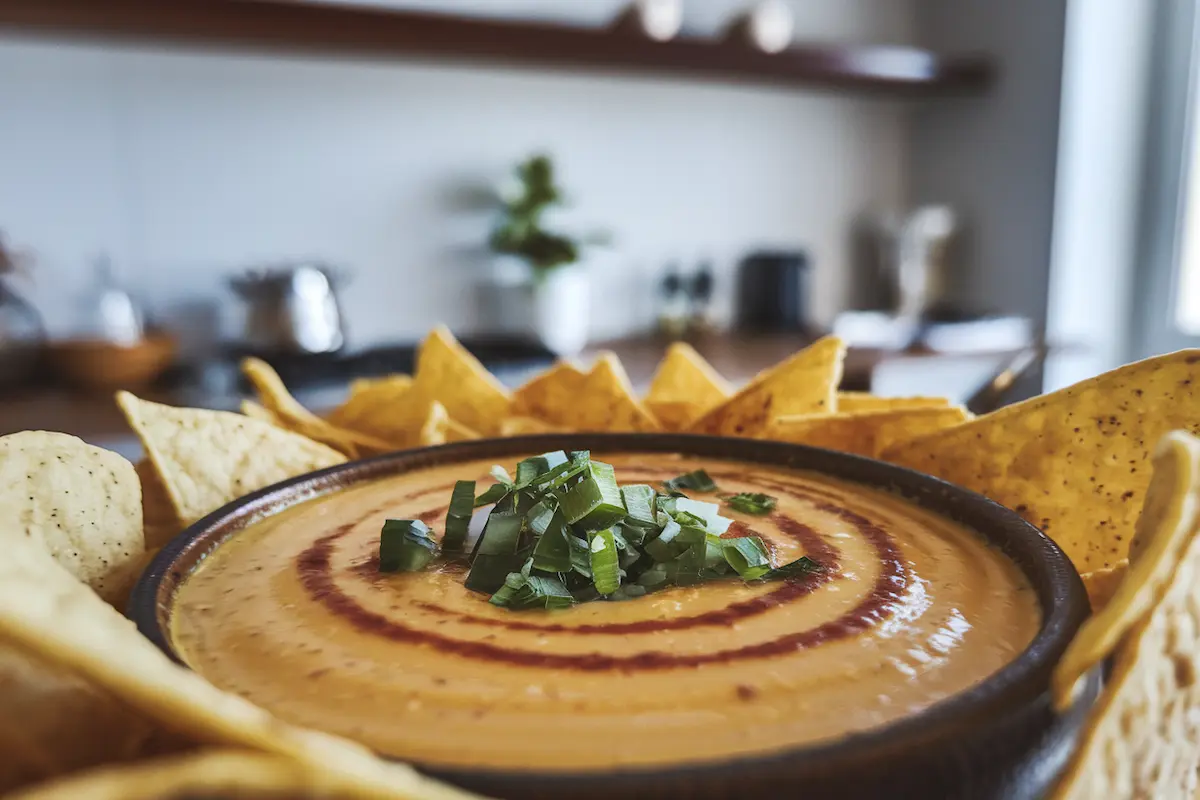Recreating your favorite Chipotle queso recipe at home is a rewarding journey into the heart of Mexican-inspired flavors. Whether you’re hosting a party, enjoying a cozy night in, or simply craving a rich, creamy dip, this recipe has got you covered. From selecting the freshest ingredients to mastering the perfect cheese sauce consistency, every detail in this guide will ensure a satisfying and delicious result. Let’s dive into the first step of this flavorful adventure.
Introduction to Chipotle Queso Recipe
What Makes Chipotle’s Queso So Popular?
Chipotle’s Queso Blanco is a fan-favorite for a reason. Its rich, creamy texture and perfectly balanced spicy flavor have elevated it from a simple side to a sought-after indulgence. The blend of white cheddar, Monterey Jack, and roasted peppers creates a taste sensation that pairs wonderfully with tortilla chips, tacos, or even veggies.
The Inspiration Behind Queso Blanco
Rooted in the traditions of Mexican cuisine, Queso Blanco—or “white cheese dip”—has been reimagined by Chipotle to deliver a bold, yet approachable, flavor profile. By incorporating fresh ingredients, carefully selected cheeses, and an emphasis on authentic preparation methods, Chipotle has brought a modern twist to a classic.
Benefits of Making It at Home
Why settle for takeout when you can whip up a batch of this creamy delight in your own kitchen? Homemade queso gives you control over the ingredients, ensuring a healthier, fresher result. Plus, it’s an opportunity to experiment with flavors—adding your own twist to make it spicier, creamier, or even more indulgent.
Key Ingredients in the Chipotle Queso Recipe
Every great dish starts with quality ingredients. The Chipotle queso recipe centers around these staples:
- Cheeses: White cheddar and Monterey Jack for their creamy texture and sharp flavor.
- Peppers: Roasted poblano and serrano peppers for smoky heat.
- Fresh Aromatics: Garlic, onion, and tomatoes to enhance the flavor base.
- Milk and Cornstarch: For the perfect creamy consistency.
Ingredient Selection and Preparation
Selecting the Right Cheeses
The secret to a delicious Chipotle queso recipe starts with high-quality cheese. Opt for freshly grated white cheddar and Monterey Jack. These cheeses melt smoothly and provide the perfect balance of creaminess and tang. Avoid pre-shredded cheese, as it often contains anti-caking agents that can make your sauce gritty.
White cheddar adds depth with its sharpness, while Monterey Jack ensures a creamy base that’s mild enough to let the other flavors shine. Combining these two cheeses creates a luxurious texture and taste that’s as close to Chipotle’s queso as you can get.
The Role of Peppers in Flavor Profile
Peppers are the stars when it comes to building the queso’s bold flavor. Poblano peppers offer a smoky, slightly sweet taste, while serrano peppers bring the heat. This dynamic duo creates the perfect spice level—warm and flavorful but not overpowering.
For authenticity, roast the peppers to bring out their natural sweetness. Roasting also enhances their smokiness, giving the queso its signature kick. If you prefer a milder version, you can substitute serranos with jalapeños or even skip them altogether. Either way, fresh peppers make all the difference, so don’t skimp on quality!
Importance of Fresh Ingredients
Every ingredient in this queso recipe plays a vital role. Freshness matters, especially for aromatics like onions and garlic. Finely chop fresh onions for a subtle sweetness, and mince garlic to bring depth to the dish. Both of these ingredients act as the foundation, complementing the creaminess of the cheese.
Tomatoes add a touch of acidity and a hint of sweetness, balancing out the rich flavors. Choose ripe, firm tomatoes and dice them finely for the best results. Fresh ingredients not only enhance flavor but also ensure your queso remains vibrant and satisfying.
Cooking Techniques

Preparing the Peppers and Aromatics
Roasting and preparing the peppers properly is a crucial step. Start by placing the poblano and serrano peppers on an open flame or under a broiler until their skins blister and blacken. Once roasted, place the peppers in a sealed container or plastic bag for 10 minutes. This step helps loosen the skin, making it easy to peel.
After peeling, remove the seeds and dice the peppers finely. If you want extra spice, leave in a few seeds from the serrano pepper. In a skillet, heat a drizzle of olive oil and sauté diced onions and minced garlic until fragrant and translucent. This forms the aromatic base that blends seamlessly into the cheese sauce.
Creating a Smooth Cheese Sauce
Achieving a velvety cheese sauce is both an art and a science. Start with a low flame to gently heat your milk or cream. Gradually add small handfuls of white cheddar and Monterey Jack, stirring continuously with a whisk or silicone spatula. This slow process prevents clumping and ensures an even melt.
For added creaminess, incorporate a teaspoon of cornstarch dissolved in cold milk. This slurry stabilizes the cheese, preventing it from separating or becoming oily. Remember to keep the heat low—high temperatures can cause the cheese to break, leaving you with a lumpy mess.
Adjusting Consistency and Thickness
Perfecting the thickness of your queso is all about balance. If your queso is too thick, add a splash of milk to thin it out. If it’s too runny, whisk in a small amount of the cornstarch slurry.
For a silkier texture, blend the queso using an immersion blender once all the ingredients are combined. This step also incorporates any roasted pepper chunks into the sauce, ensuring a uniform consistency. With these tips, your homemade Chipotle queso will rival the restaurant version every time.

